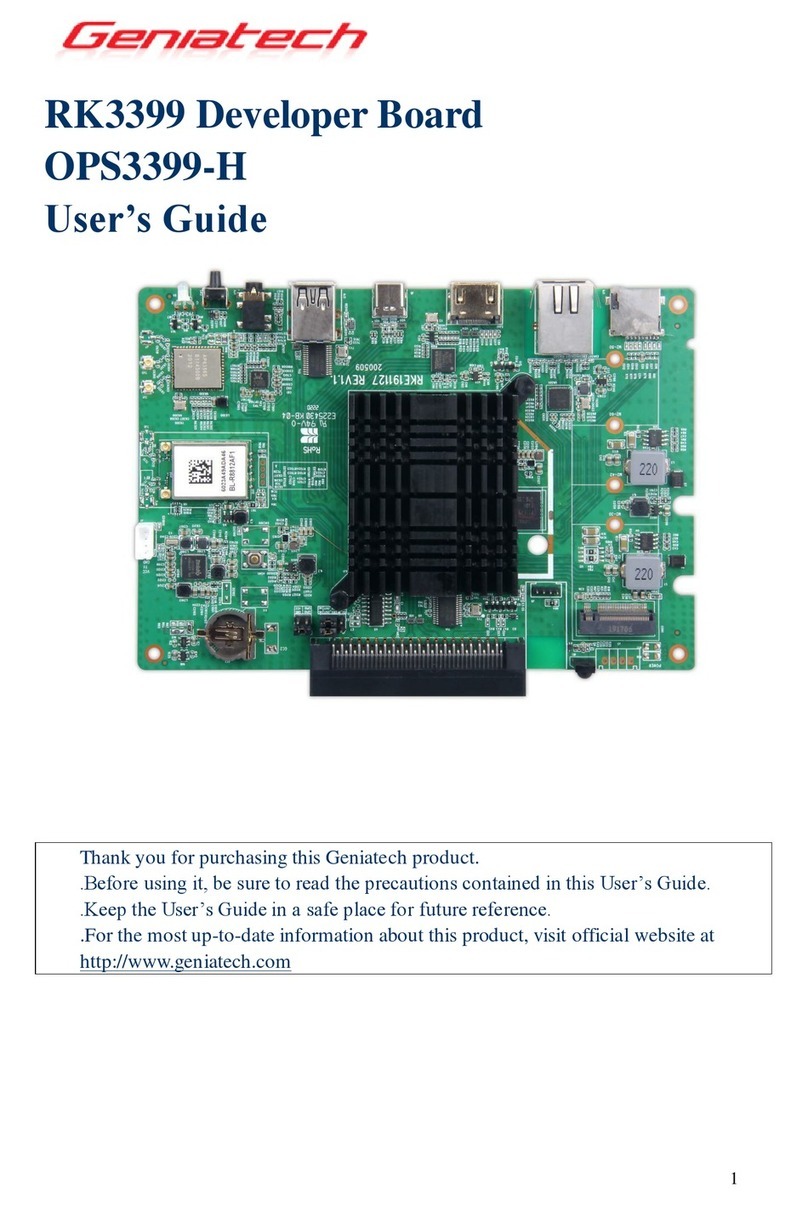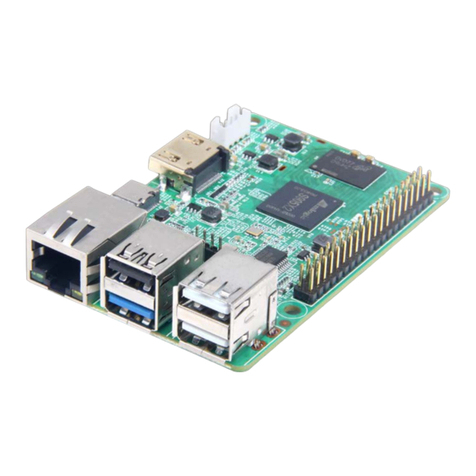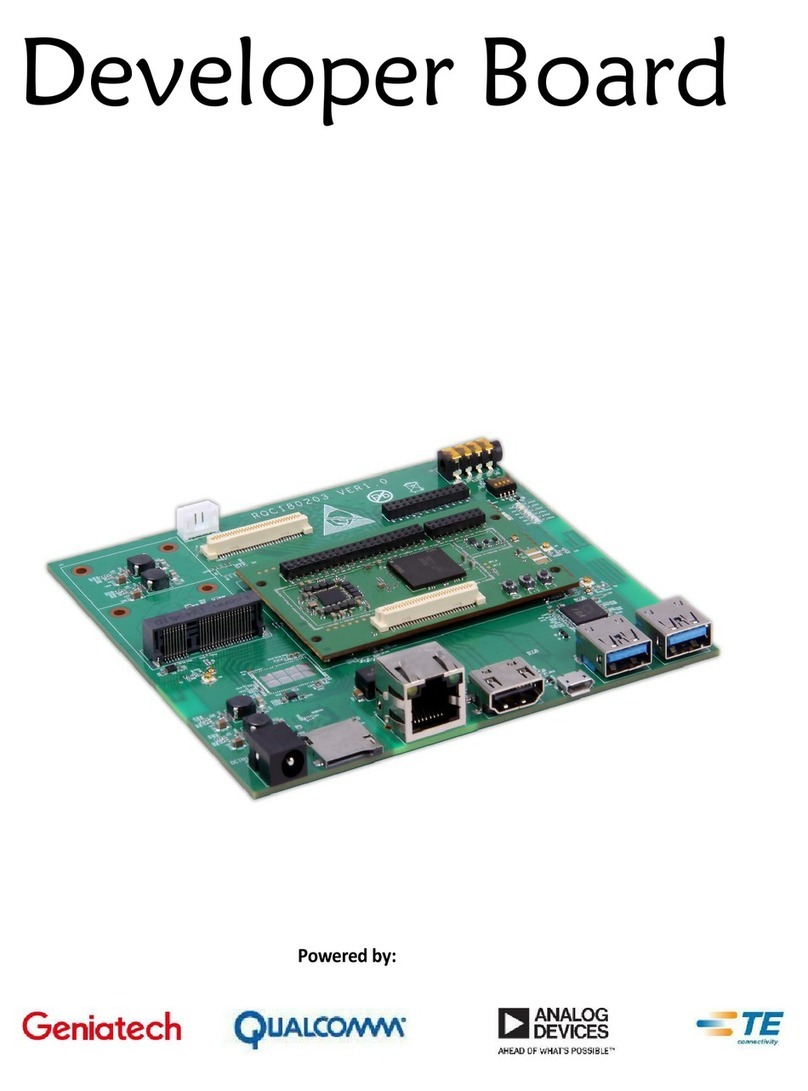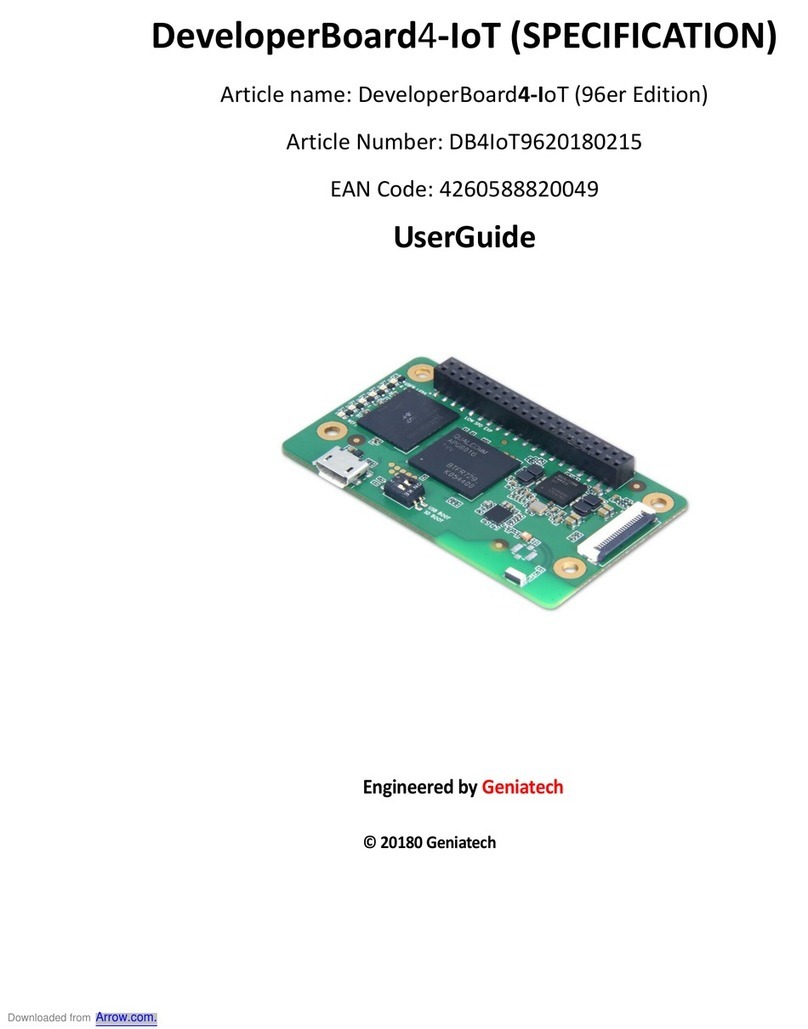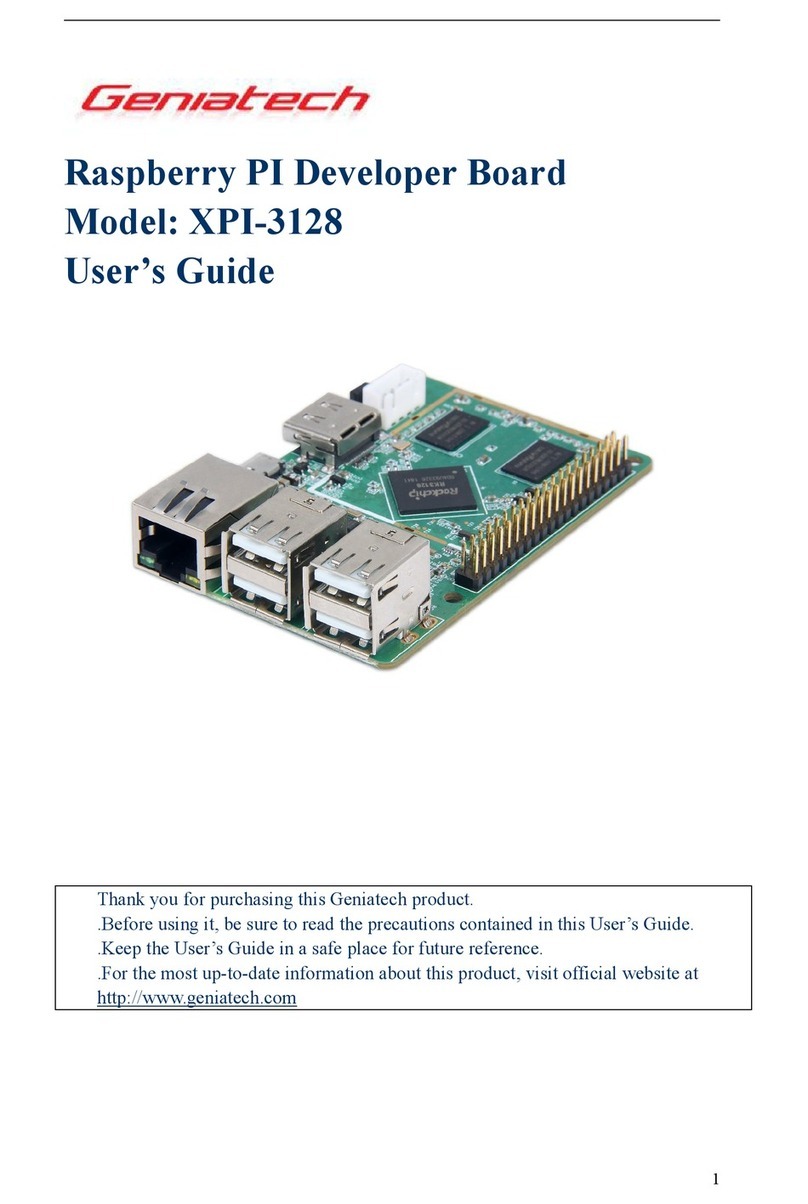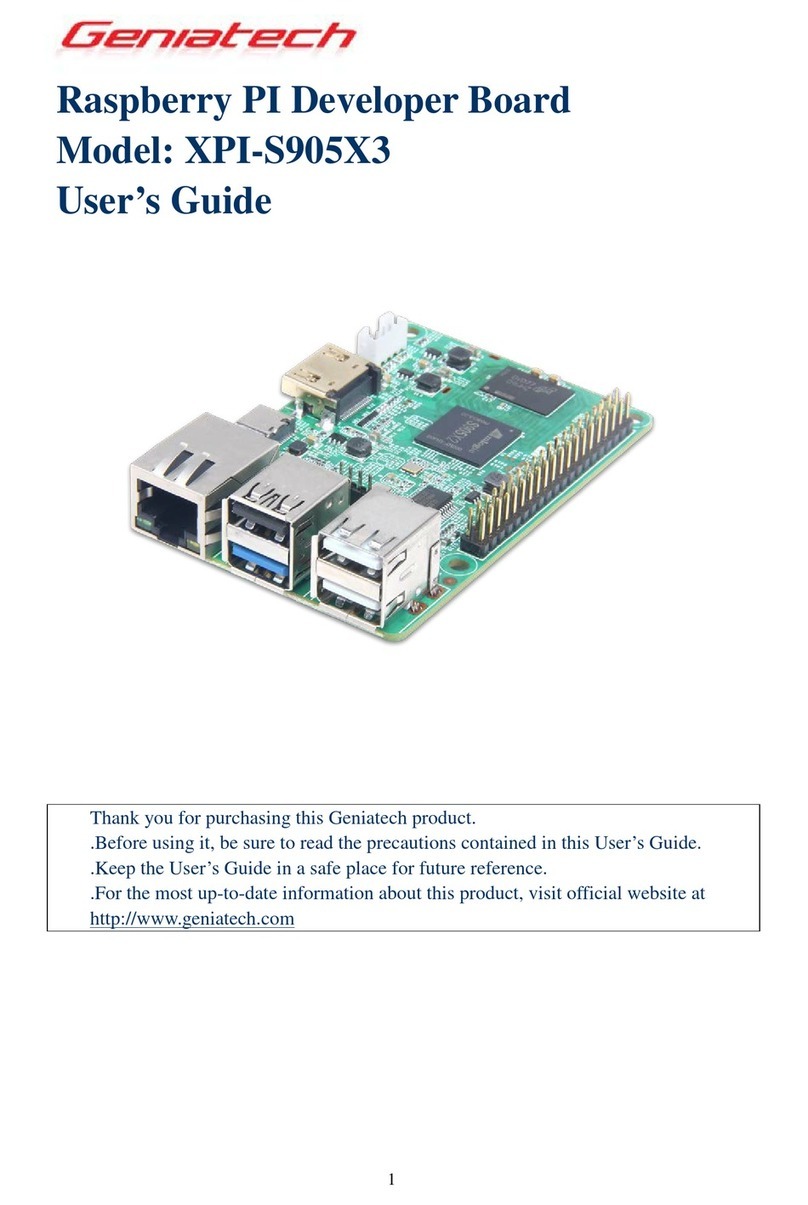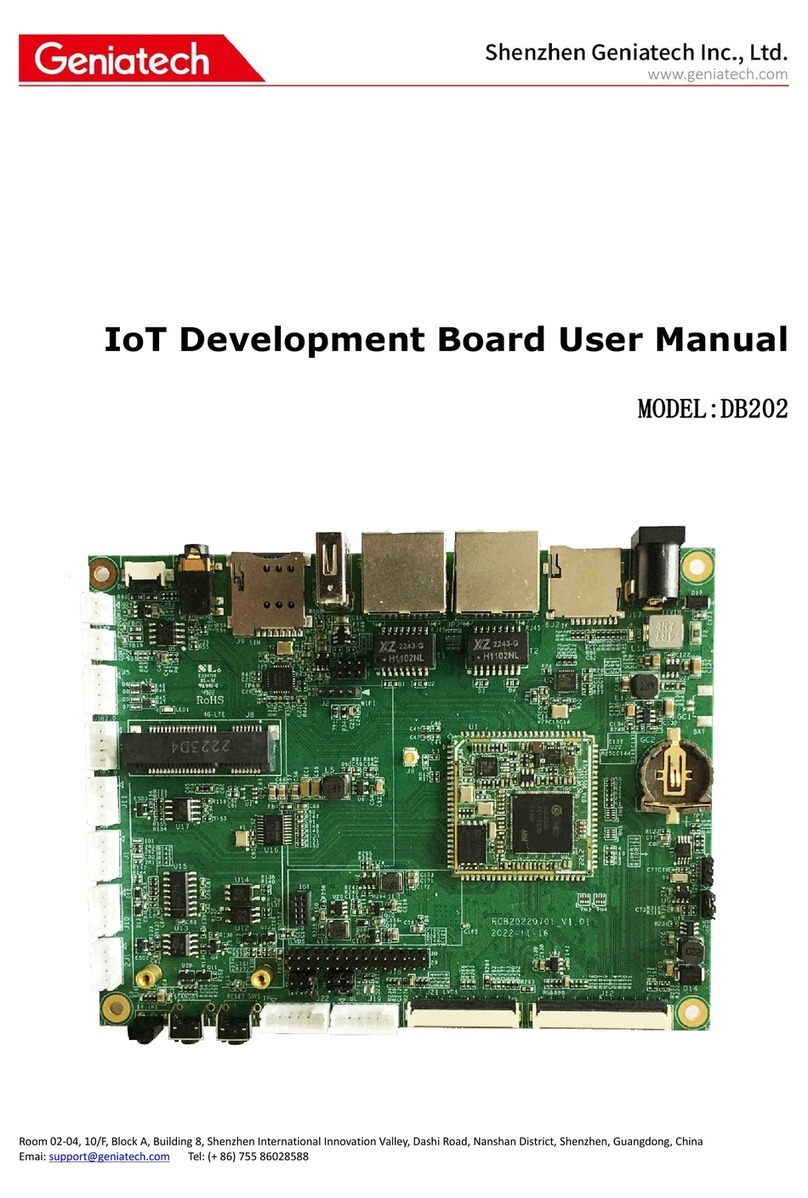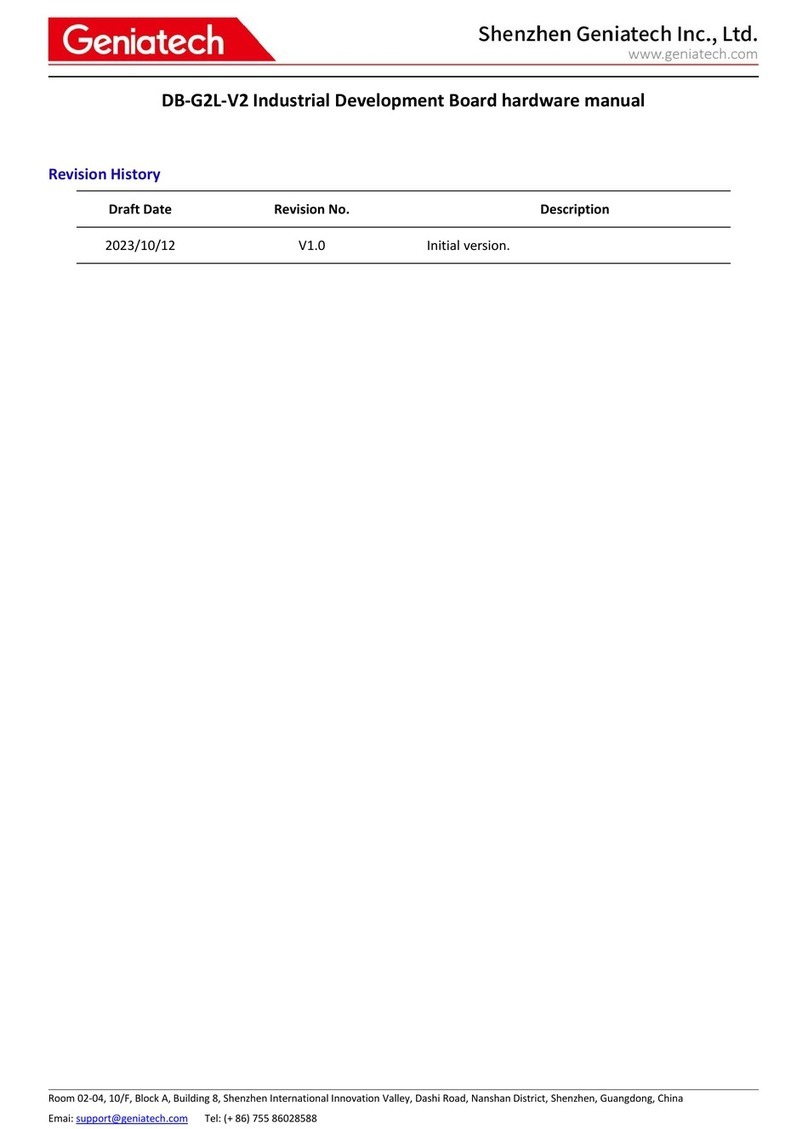
Room 02-04, 10/F, Block A, Building 8, Shenzhen International Innovation Valley, Dashi Road,
Nanshan District, Shenzhen, Guangdong, China
Contents
1 Introduction ......................................................................................................................................... 1
1.1 Board overview ................................................................................................................................ 2
2. What’s in the Box ............................................................................................................................... 3
3.RS-G2L100&RS-V2L100 BOARD OVERVIEW ..............................................................................4
3.1 System Block Diagram .................................................................................................................4
3.2 Processor .......................................................................................................................................4
3.3 Memory ........................................................................................................................................ 4
3.4 MicroSDHC ..................................................................................................................................4
3.5 Display Interface .......................................................................................................................... 5
3.5.1 HDMI ..................................................................................................................................... 5
3.5.2 MIPI-DSI ................................................................................................................................5
3.6 Camera Support ............................................................................................................................ 5
3.7 Audio ............................................................................................................................................ 6
3.8 WiFi .............................................................................................................................................. 6
3.9 Bluetooth ...................................................................................................................................... 6
3.10 RGMII ........................................................................................................................................ 6
3.11 USB Port .....................................................................................................................................6
3.11.1 USB-Host ports .....................................................................................................................6
3.11.2 USB-Device port .................................................................................................................. 7
3.12 Debug ......................................................................................................................................... 7
3.12.1 Debug UART ........................................................................................................................7
3.12.2 Debug JTAG ......................................................................................................................... 7
4 40-pin Low Speed(LS) expansion connector ...................................................................................... 7
4.1 UART{0/1} ...................................................................................................................................8
4.2 I2C{0/1} ....................................................................................................................................... 8
4.3 GPIO{A-L} .................................................................................................................................. 8
4.4 SPI 0 ............................................................................................................................................. 8
4.5 I2S .................................................................................................................................................8
5 14-pin Low Speed(LS) expansion connector ...................................................................................... 9
5.1 Speaker ......................................................................................................................................... 9
5.2 Mic ................................................................................................................................................9
5.3 Headset ......................................................................................................................................... 9
6 60-pin High Speed(HS1) expansion connector ................................................................................... 9
6.1 MIPI DSI 2 ................................................................................................................................. 10
6.2 MIPI CSI 0 ..................................................................................................................................11
